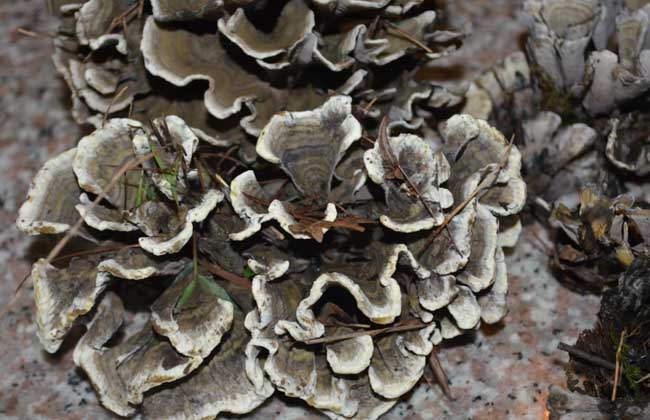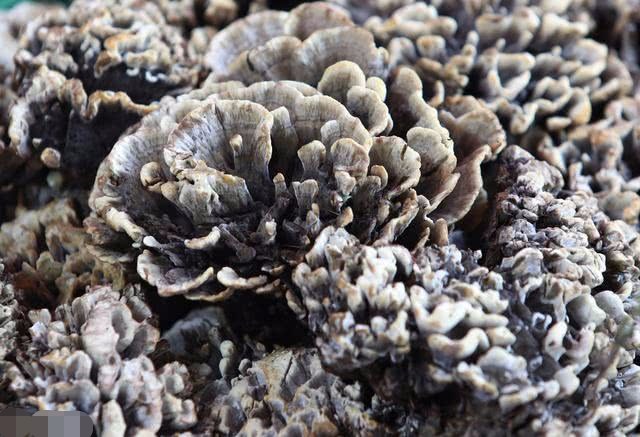bacilli Learn more about bacilli
-
How much is the price of 2019 dry bacilli per jin? What are the planting techniques? Accessory function

Apart from vegetables and meat, fungi are also the ingredients we often eat, such as dried bacillus, Lentinus edodes, Flammulina velutipes and so on. How much is the price of 2019 dried bacilli per jin? What are the planting techniques? What is the efficacy? How much is the price of 2019 dry bacilli per jin? At present
2020-11-08 2019 dry rice fungus price more less money one jin planting technology have -
How much is the price of dried bacilli per jin?

How much is the price of dried bacilli per jin?
2019-02-18 -
How to preserve dry bacilli?

How to preserve dry bacilli?
2018-08-13 -
The fungicide of orchid-bacilli

The fungicide of orchid-bacilli
2018-05-02 -
How much is 2018 dry bacilli per jin? What is the effect? How?

Ganba, a rare wild edible fungus in Yunnan, is rich in nutrition and fragrant. It is the top grade of wild edible fungi. So how much is 2018 dry bacilli per jin? What is the effect? How do I do that? Learn from Mr. Zhang, a wild fungus vendor in Yunnan Wood spray Market.
2020-11-09 2018 Ganba more bacteria less money one jin yes what efficacy effect -
How to preserve the latest dry bacilli?

Ganba is a rare wild edible fungus peculiar to Yunnan and Hubei provinces. It grows among pine trees in the mountains of central and western Yunnan and northwest Hubei, and is rich in vitamins, high-quality protein and other ingredients that are beneficial to the human body.
2020-11-10 The latest Ganba bacteria how preservation yes Yunnan Province -
Are all bacilli beneficial?

Are all bacilli beneficial?
2018-07-10 -
Prevention and treatment of necrotic bacilli in cattle

Necrobacillosis is a chronic infectious disease caused by Clostridium necrosis. in clinic, tissue necrosis is common, such as skin, subcutaneous tissue and digestive tract mucosa, and metastatic necrosis can also be formed in the viscera. First, symptoms. The incubation period is 1-3 days, and the common disease type of cattle is rotten hoof.
2020-11-08 Cattle raising necrosis bacilli disease prevention and treatment are caused by -
Prevention and treatment of necrotic bacilli in deer

Deer necrobacillosis is a chronic infectious disease caused by necrotic bacilli. Generally, it is infected by skin and mucous membrane trauma. The main damage to the hoof, followed by the skin of the cavity mucosa, necrotic lesions occurred, some transferred to the liver, lung and other lesions, resulting in a large number of deaths without timely treatment. At present, the disease does great harm to the deer industry and often causes economic losses, so it is necessary to do a good job in prevention and control. I. epidemic characteristics of deer necrotic bacilli disease mostly occurs in deer herds in autumn and winter, and during autumn mating of male deer, due to the top fight.
2019-01-16 -
Prevention and treatment of necrotic bacilli in deer

Deer necrobacillosis is a chronic infectious disease caused by strict anaerobic necrotic bacilli. It can happen all the year round, which is more popular than in summer and autumn. The source of infection is mainly diseased deer, which can be infected by deer of all ages. Skin injury is the main route of infection, and it can also be infected through digestive tract trauma, saw antler injury, birth canal wound and umbilical cord inflammation. In addition, the ground is wet and muddy, uneven, hot and humid climate, poor management and other easy to promote the occurrence of the disease. If necrobacillosis occurs in deer, it should be taken immediately.
2019-01-16 -
How to prevent and cure necrotic bacilli in deer

1. Epidemic characteristics: necrobacillus disease of deer mostly occurs in deer herds in autumn and winter, and infection occurs due to the loss of top bucket hoof during autumn breeding and foot injury during lactation and grouping of young deer. In addition, the sports ground is uneven, when there are foreign bodies, stagnant water, and mud
2020-11-08 Deer necrosis bacilli disease how prevention one epidemic characteristics -
Occurrence and prevention of necrotic bacilli in rabbits

First, the symptoms of diseased rabbits lost appetite, salivation, lips, oral mucosa and gingiva and other places such as induration, and then necrosis, stench. Lumps sometimes occur in the neck or chest, face or chest, forming abscesses or ulcers. Malodorous secretions were released after the lesion was broken, and the course of the disease lasted for weeks or months. Died of elevated body temperature, weight loss and exhaustion. Second, prevention and control 1. Prevention: rabbit cages should avoid sharp foreign bodies, prevent bite fights, and prevent skin damage. Should be self-propagating and self-supporting. Breeding rabbits imported from other places must be quarantined for one month without other diseases.
2019-01-16 -
A complete collection of practices of dry bacilli

A complete collection of practices of dry bacilli
2018-07-03 -
Prevention and treatment of bovine necrotic bacilli

Necrobacillosis is a chronic infectious disease caused by Clostridium necrosis. in clinic, tissue necrosis is common, such as skin, subcutaneous tissue and digestive tract mucosa, and metastatic necrosis can also be formed in the viscera. First, symptoms. The incubation period is 1-3 days. The common diseases in cattle are rotten hoof disease and diphtheria. The former is common in adult cattle. At the beginning of the disease, there are holes and holes in the bottom of the hoof, and there are necrotic and decaying inflammatory products. It is black and smelly like water, in addition, abscesses, pus leakage and surrounding skin necrosis are formed between the toes, the crown of the hoof and the heel. Inflammation can spread to synovial bursa and tendon
2019-01-15 -
Can wild dried mushrooms be artificially cultivated at an expensive price?

Abstract: Wild Ganba mushroom is expensive, can it be cultivated artificially? Some people say that in addition to matsutake, it is expensive to dry Pakistan bacteria on the mountain. Can dry Pakistan bacteria be planted artificially? Ganba fungus, scientific name Ganba leather fungus, is a wild rare food...
2018-10-23 -
Treatment of Pseudomonas aeruginosa in cultured ostrich

Pseudomonas aeruginosa is widely found in air, feces, soil and sewage ponds. It is a gram-negative bacilli with flagella at one end and motility. The strain grows well on the common medium and can produce blue-green pigment and aroma.
2020-11-08 Aquaculture ostrich Pseudomonas aeruginosa bacilli diseased treatment -
Control of carapace canker (Brown spot) of cultured Shrimp

The main results are as follows: (1) the bacteria that can be isolated from the focus are Vibrio, Pseudomonas and Flavohacterium. It is a gram-negative bacilli. (2) there are dark brown or black spot ulcers on the body surface carapace and appendages of shrimp with symptomatic ① disease.
2020-11-08 Culture shrimp crustacean canker brown spot disease control pathogen -
Prevention and treatment of common blight in cattle after flood

It is hot, rainy and flooded in summer, which is the season with high incidence of bovine epidemic disease. Therefore, attention must be paid to the prevention and control of cattle susceptible diseases in this period. Anthrax is an acute zoonotic disease. Cattle are most susceptible to anthrax. Blood-sucking insects often occur when they are active during the rainy season and after flooding. The disease is characterized by sudden high fever, coma, purple conjunctiva, trembling all over the body, molars, spasm, natural pore bleeding and other symptoms. Dead bovine body stiffness is incomplete, blood does not coagulate, showing coal tar color, subcutaneous and subserous tissue bleeding, red peptone-like, spleen
2019-01-16 -
Control of swine eubacillosis

Eubacterium suis (formerly known as Corynebacterium suis) is widely distributed in nature, most of which are non-pathogenic bacteria, only a few of which are pathogenic and can cause acute or chronic infectious diseases in humans and animals. It is generally characterized by purulent or caseous pathological changes in certain tissues and organs. Clinically, it mainly causes urinary tract infection in sows. Pathogenic and epidemic characteristics of eubacterium suis for a polymorphic large bacilli. From spherical to rod-shaped, one end or both ends of the longer thallus expanded into a rod, single in or into a grid or cluster arrangement. Gram stain positive, no flagella, pod
2019-01-16 -
What are the harmful insects?

What are the harmful insects?
2018-07-03
